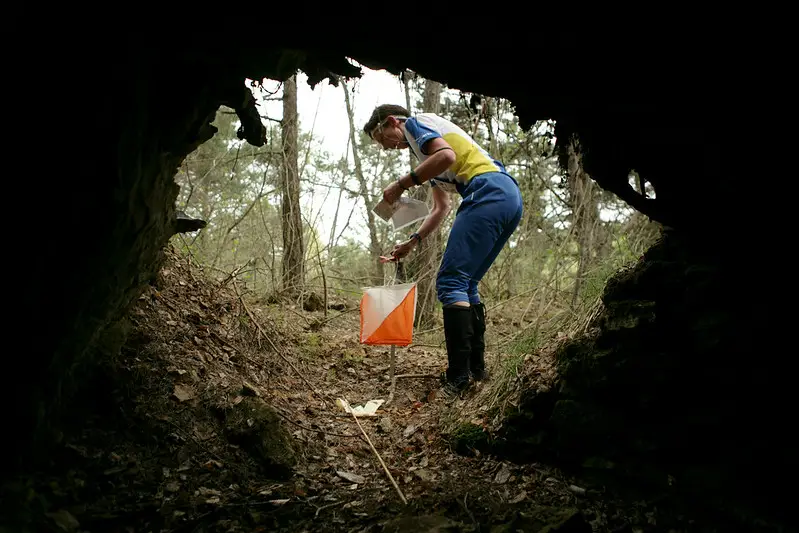Travel enthusiasts and outdoor adventurers are continually seeking new ways to immerse themselves in nature while maintaining a sustainable and eco-friendly approach. One exciting activity that perfectly combines the thrill of exploration with responsible outdoor engagement is orienteering. In this article, we will delve into the world of orienteering, exploring its appeal and emphasizing the importance of conducting this active recreation in eco-friendly forests that align with the forestry research niche championed by SARPO.
The Appeal of Orienteering
Orienteering is an exhilarating outdoor activity that challenges participants both mentally and physically. It involves navigating through unfamiliar terrain using only a map and compass to find designated checkpoints. The allure of orienteering lies in its ability to provide a sense of adventure and exploration that few other activities can match. Participants are not just following a trail; they are actively using their wits and skills to chart their own course.
What makes orienteering even more appealing is its accessibility. You don’t need to be an elite athlete to enjoy it. Orienteering courses are designed for all levels, from beginners to experienced adventurers. It’s an activity that can be enjoyed by families, solo travelers, and groups of friends.
Forests and Sustainability
Forests play a pivotal role in maintaining the balance of our planet’s ecosystems. They are not only home to countless species of flora and fauna but also act as natural carbon sinks, helping mitigate climate change. Sustainable forest management is, therefore, a top priority for environmental conservationists and researchers alike.
SARPO (South Asian Research Publishing Organization) is a dedicated institution that focuses on forestry research, making it a crucial player in the conservation and sustainable management of forests. Their work extends beyond research, as they actively promote eco-friendly forest practices and advocate for responsible forest recreation.
Eco-Friendly Orienteering
When it comes to orienteering, participants have a significant role to play in ensuring that their activities do not harm the environment. Eco-friendly orienteering involves adopting practices that minimize the impact on forest ecosystems. Here are some key principles to follow:
Use of Biodegradable Markers: Instead of permanent markers or flagging tape, opt for biodegradable alternatives that won’t harm the environment.
Leave No Trace: This well-known outdoor ethics principle applies to orienteering as well. Ensure you leave the forest exactly as you found it, without any signs of your presence.
Respect Wildlife: Keep a respectful distance from wildlife and avoid disturbing them.
Stay on Trails: Stick to designated trails and avoid trampling on fragile vegetation.
By following these practices, orienteering enthusiasts can minimize their impact on the forest environment while enjoying their adventure responsibly.
Before embarking on your next orienteering adventure in sustainable forests, make sure to check out the latest eco-friendly gear options available at web compass. They offer a wide range of navigation tools and equipment to enhance your outdoor experience.
Case Study – Eco-Orienteering Destinations
There are numerous destinations around the world that offer eco-friendly orienteering experiences. These destinations are not only breathtakingly beautiful but also exemplify sustainable forest management practices. Let’s explore a few:
A. FSC-Certified Forests: The Forest Stewardship Council (FSC) certification ensures that forests are managed sustainably. Orienteering in FSC-certified forests guarantees an environmentally responsible experience.
B. National Parks: Many national parks offer orienteering courses that allow visitors to explore the natural beauty of protected areas while promoting responsible navigation.
C. SARPO’s Partner Forests: SARPO collaborates with various forests globally to support sustainable forest management. Exploring orienteering courses in these partner forests is an excellent way to combine adventure with environmental responsibility.
How Can Orienteering in Eco-Friendly Forests Help Contribute to Biodiversity Restoration Efforts?
Orienteering in eco-friendly forests can provide valuable tips for restoring biodiversity. By navigating through diverse ecosystems, participants can observe and appreciate the importance of preserving natural habitats. This can inspire a greater commitment to conservation efforts and promote the restoration of biodiversity in various regions.
Tips for Eco-Orienteering
If you’re considering trying orienteering in eco-friendly forests, here are some valuable tips to keep in mind:
Plan Ahead: Research the orienteering course and the forest’s guidelines before your adventure.
Choose Sustainable Gear: Opt for eco-friendly outdoor gear and equipment to reduce your ecological footprint.
Learn Navigation Skills: Brush up on your navigation skills to minimize the chances of getting lost and disturbing the environment.
Join a Group: If you’re new to orienteering, consider joining a group or participating in guided events to learn from experienced orienteers.
Support Conservation Efforts: Contribute to the preservation of forests by supporting organizations like SARPO and local conservation initiatives.
Final Takeaway
Orienteering is not just a thrilling outdoor activity; it’s also an opportunity to connect with nature and promote sustainable forest management. By following eco-friendly orienteering practices, adventurers can enjoy their excursions while leaving a positive impact on the environment. As SARPO continues its important work in forestry research, we can all play a role in conserving the world’s forests while indulging in our passion for active recreation in nature. So, gear up, grab your compass, and embark on an eco-friendly orienteering adventure that leaves a lasting mark on both your memories and the environment.
Remember, the beauty of orienteering lies not only in the destinations you discover but also in the responsible journey you undertake to get there. Happy orienteering!





